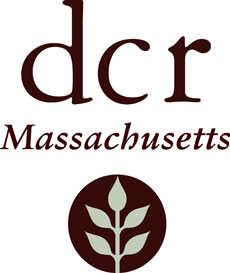- Department of Conservation & Recreation
Media Contact
Brenna Galvin, DCR Press Secretary
Boston — The Massachusetts Department of Conservation and Recreation (DCR) today launched a new pilot program aimed at enhancing outdoor recreation throughout the state. The Trail Master Plan Pilot Program will focus on six properties: Robinson State Park, Leominster State Forest, Brimfield State Forest, Lowell Dracut-Tyngsborough State Forest, Cutler Park Reservation, and Freetown Fall River State Forest. The goal of these plans is to develop trail systems that protect natural and cultural resources, can withstand a changing climate, require little maintenance and enhance visitors' outdoor experiences.
“Our goal is simple: create sustainable trails that everyone can enjoy,” said DCR Commissioner Brian Arrigo. “We want to ensure all outdoor enthusiasts—hikers, cyclists, and nature lovers—have access to safe, well-designed trails that will improve the well-being of communities across our state for years to come.”
The Trail Master Plan program is designed to improve and manage state trails for the long term. Each plan will focus on making trails safer, upgrading them, improving signage, and using resources wisely. Additionally, the plans will inform future decisions about expanding or closing trails and ensure DCR takes into account the environmental and cultural impacts, climate resiliency, and community needs.
“This initiative is an important step toward strengthening Massachusetts’ outdoor recreation infrastructure, which not only enhances quality of life but also drives local economies.” said Massachusetts Office of Outdoor Recreation (MOOR) Director Paul Jahnige. “By developing sustainable trail systems, we’re not just improving access to nature, but also creating economic opportunities that benefit communities throughout the Commonwealth.”
As part of the planning process, DCR will gather data about existing trails, how well they work, their resilience to climate change, and their effects on local natural and cultural resources. This data collection will provide the foundation for creating well-rounded, sustainable plans. The process will also seek public input to ensure the plans reflect local priorities and concerns.
The Trail Master Plan is an important initiative aimed at enhancing the trail system on our public lands, with a planning process set to begin in spring 2025. The process will include four phases, with multiple opportunities for public input and feedback to shape the trail system. DCR encourages residents and stakeholders to actively participate and share their insights throughout the process.
- Phase I: Data Collection
In this phase, all trails—both authorized and unauthorized—will be evaluated. Cultural and natural resources within the area will also be inventoried. This work will be complemented by field surveys, and tribal consultation will be conducted. Additionally, we will seek public input through a community survey. - Phase II: Identifying Impacts and Opportunities
DCR will analyze the data collected to understand how trails are impacting the area and identify opportunities for improvements. This process will be guided by DCR’s Trail Guidelines, Landscape Designation Management Guidelines, and any relevant recommendations from Resource Management Plans. Input from staff, stakeholders, and the public will help shape the findings. - Phase III: Refining the Trail System and Implementation Plan
DCR will create an improved and sustainable trail system along with a detailed plan for how to make those improvements. A public meeting will be held to discuss the proposed design, and feedback will be incorporated into the final plan. - Phase IV: Permitting and Implementation
In the final step, DCR will secure the necessary permits and begin putting the recommendations from the plan into action to enhance the trail system.
This multi-phase approach ensures that the development of the trail system is well-informed, inclusive, and aligned with both community needs and conservation goals.
For more information about the Trail Master Plan process and to review previously completed plans, please visit DCR Trail System Planning.
###
